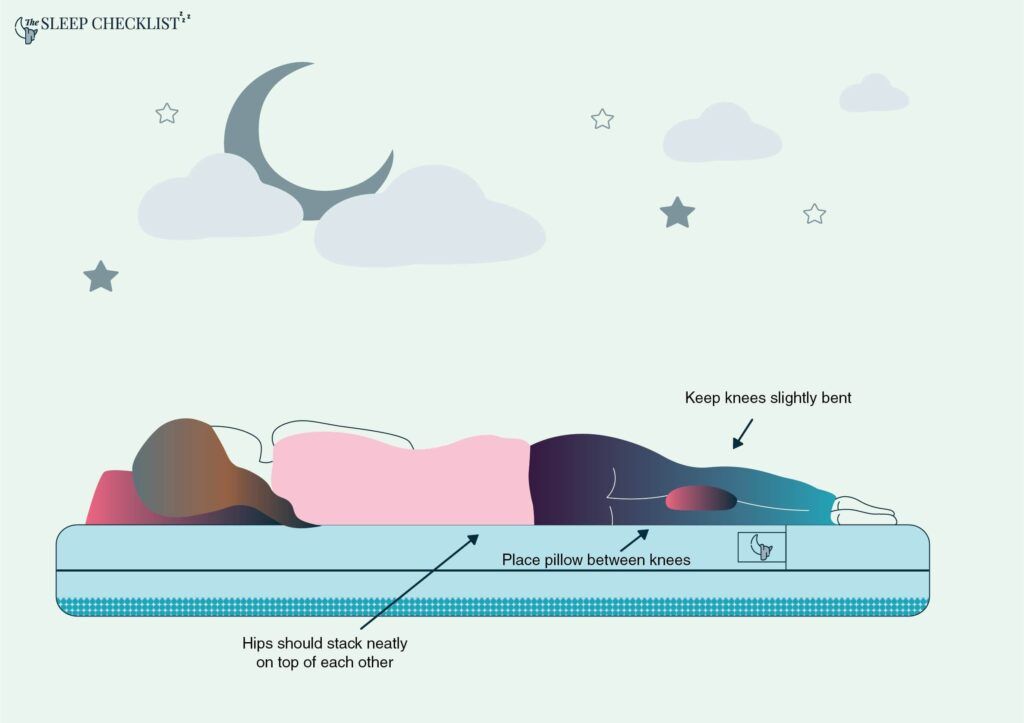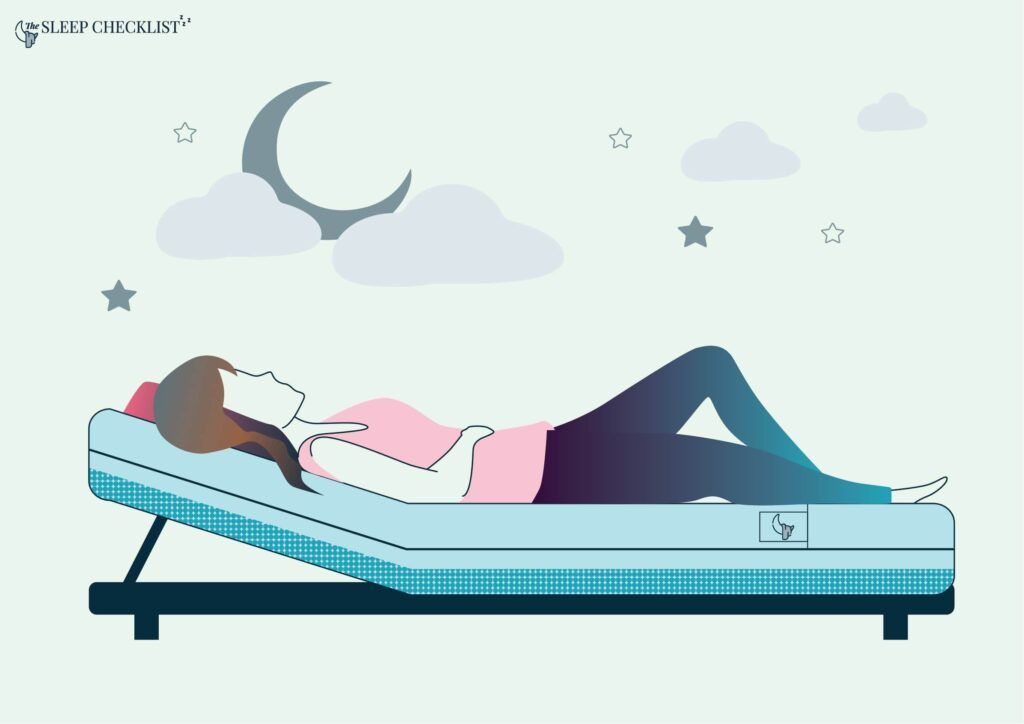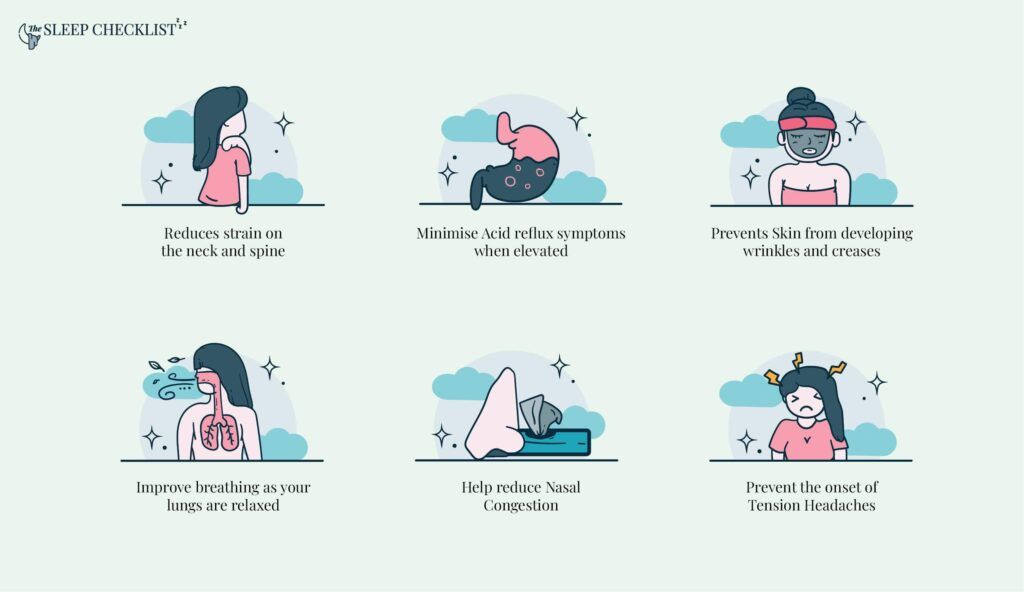Are you wondering how you can sleep on your back? Maybe your GP recommended that side or front sleeping isn’t what you need – and back sleeping is. If it’s not your favourite know that you’re not alone. Around 74% of adults sleep exclusively on their sides.
If you’ve tried to sleep on your back countless times but haven’t had any success, then our guide is for you. Maybe you’ve tried placing a pillow beneath your back to make it comfy, but those sleeping problems still occur.
And we know that sleeping awkwardly can result in chronic back, neck, or shoulder pain. Worse, it could be a combination of the three.
It pays to know how to train yourself to sleep on your back. Read on as we teach you how you can do it.
Is it Possible to Teach Yourself to Sleep on Your Back?
Yes, it is possible to teach yourself to sleep on your back. There are multiple methods, but the 4 big ones are:
- Placing pillows underneath your knees
- Using an adjustable bed
- Investing in better bed accessories
- Creating a pillow barrier
Even with these tips listed, people tend to downplay themselves, but everyone is capable of change. Even the most consistent habit can be changed, including your sleeping position.
4 Methods To Sleep On Your Back
To train yourself to sleep on your back, there are a few methods to do it:
1. Place Pillows Underneath Your Knees

Placing pillows underneath your knees is a good way to reduce feeling uncomfortable.
Some people encounter lower back and pelvic area discomfort when their backs are flat on the bed. A soft pillow underneath the knees will reduce the pressure around the lower back and counteract any pain. You can also try these methods to sleep with lower back pain.
Once you get comfy, your body will probably adapt faster to this sleeping position change, and you’ll be able to sleep on your back whenever you want.
2. Use An Adjustable Bed

Another method to train yourself to sleep on your back is to sleep in an angle-adjustable bed. And if a hospital bed is what quickly came to your mind when reading this, you’re on the right lines.
Hospitals are equipped with angle-adjustable beds because of their versatility in accommodating a wide range of patients with different preferences regarding sleeping positions and, of course, their medical problems.
So why use an adjustable bed? An adjustable bed can work wonders. The bed can adjust to the angle of your liking and increase comfort for back sleeping positions.
If you have lower back discomfort when sleeping on your back, try giving your upper body a slight incline and see if the discomfort dissipates. If not, experiment with different angles and adjust to your preferences.
3. Invest In Better Bed Accessories

If you’re trying to sleep on your back and your neck, back, or legs are sore, your bed accessories may hinder your progress. We’re talking about pillows, mattress toppers, mattress pads, and even your mattress.
Low-quality bed accessories can be taxing to your body, even when you’re in your most comfortable sleeping position.
That’s why investing in higher-quality products ensures your personal sleeping preferences are followed. This makes it easier to train yourself to sleep on your back.
4. Create A Pillow Barrier

Another method is to bring back your childhood memories of when you’re a toddler being carefully watched through your sleep by your lovely parents—the pillow barrier.
Pillow barriers are a popular option for parents with toddlers, ensuring they don’t sleep sideways or on their stomachs. Or they get passively reminded not to get too close to the edge of their beds.
In your case, a pillow barrier would be to remind you to keep sleeping on your back and don’t ever turn sideways or sleep on your tummy. Think about the barrier as a cage where your movements are limited to only one sleeping position: the back position.
Being constantly reminded to keep your sleeping position helps to slowly and gradually turn back-sleeping into a habit. Sooner or later, you’ll be able to call yourself a back sleeper.
Benefits of Sleeping On the Back
If you happen to wonder what’s in it for you when you sleep on your back and you don’t have any medical conditions advising you against sleeping on your back, here are some benefits attributed to sleeping on your back:

- Reduces strain on the neck and spine
- May minimise acid reflux symptoms when elevated
- It prevents skin from developing wrinkles and creases
- May improve breathing as your lungs are relaxed
- It helps reduce nasal congestion
- It can help prevent the onset of tension headaches
Sleeping on your back has a lot of benefits, but this sleeping position is not for everybody. Medical conditions can prevent someone from sleeping on their back, which we discuss below.
When NOT to Sleep On Your Back?
Your sleeping position is not a one-size-fits-all approach to better overall sleep health.
There are some instances where sleeping on your back can aggravate a medical condition. It’s generally advised not to sleep on your back when you’re:
- Pregnant
- Dealing with acid reflux symptoms (sleeping on your back unelevated can make symptoms worse)
- Sleep Apnea
- Chronic Snoring
If you’re wondering why pregnant people shouldn’t sleep on their backs, the baby’s weight stresses the mother’s internal organs and spine when sleeping on her back. So a side sleeping position is often recommended for pregnant women after their first trimester.
Why Can’t I Sleep On My Back?
You can’t sleep on your back because you’re used to sleeping in your current sleeping position. Your body instinctively chooses the most comfortable position, and changing this habit can be difficult.
We understand you may be a bit frustrated you can’t seem to sleep on your back no matter what you do. In this case, patience and perseverance are needed, and you may need support and help from your loved ones.
If your medical condition needs you to sleep on your back and you can’t do it, you can also ask for support from your GP and ask them how you can do it consistently.
Is It Better To Sleep On Your Back?
Not necessarily. It depends from person to person. For example, a pregnant woman should sleep on their side as sleeping on their back places undue pressure on their spine and pelvic area, as mentioned earlier.
Other considerations include those with medical conditions exacerbated by sleeping on their backs.
If you are the average person who doesn’t have medical problems that prevent you from sleeping on your back, it is better to sleep on your back than in other sleeping positions. But asking your GP is best.
How Long Does It Take To Learn To Sleep On Your Back?
It depends, but forming a habit takes around 21 days. However, it can be shorter than that, or it can be longer.
How long depends on your willpower and self-discipline to correct your sleeping position. Gathering support from your family and doctor can also make it quicker, so long as you heed their advice and let them give you support.
Learn how to sleep on your back and not how to sleep on your back as quickly as possible. Take your time, and let your body adjust to the new sleeping position accordingly.
2 Sources
- Anson G, Kane MA, Lambros V. Sleep Wrinkles: Facial Aging and Facial Distortion During Sleep. Aesthet Surg J. 2016;36(8):931-940. doi:10.1093/asj/sjw074
- Khan BA, Sodhi JS, Zargar SA, et al. Effect of bed head elevation during sleep in symptomatic patients of nocturnal gastroesophageal reflux. J Gastroenterol Hepatol. 2012;27(6):1078-1082. doi:10.1111/j.1440-1746.2011.06968.x





